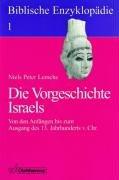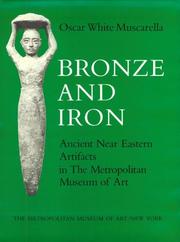| Listing 11 - 13 of 13 | << page >> |
Sort by
|

ISBN: 3170123300 9783170123304 Year: 1996 Volume: 1 Publisher: Stuttgart Kohlhammer
Abstract | Keywords | Export | Availability | Bookmark
 Loading...
Loading...Choose an application
- Reference Manager
- EndNote
- RefWorks (Direct export to RefWorks)
Ancient history --- Bible --- Israel --- Bronze age --- Criticism, interpretation, etc --- Middle East --- History --- #gsdb1 --- 933.1 --- Geschiedenis van het Joodse volk: pre-dynastieke tijd --- 933.1 Geschiedenis van het Joodse volk: pre-dynastieke tijd --- Jews --- Conquest of Canaan --- Settlement in Canaan --- Wanderings in the wilderness --- Bible. --- Be-reshit (Book of the Old Testament) --- Bereshit (Book of the Old Testament) --- Bytie (Book of the Old Testament) --- Chʻangsegi (Book of the Old Testament) --- Genesis (Book of the Old Testament) --- Sifr al-Takwīn --- Takwīn (Book of the Old Testament) --- Criticism, interpretation, etc. --- Arab countries --- Bronze age - Middle East --- Middle East - History - To 622
Book
ISBN: 9783447113328 3447113324 9783447115902 9783447117067 9783447117371 3447115904 3447117060 3447117370 9783447117623 3447392045 3447391286 3447117621 9783447120548 3447120541 Year: 2019 Volume: 9 Publisher: Wiesbaden : Harrassowitz,
Abstract | Keywords | Export | Availability | Bookmark
 Loading...
Loading...Choose an application
- Reference Manager
- EndNote
- RefWorks (Direct export to RefWorks)
[Vol. 1] At the end of the Early Bronze Age, people were clearly on the move, settlements were abandoned and the reasons for this phenomenon, either political, economic, ecological or social in nature, are partly still mysterious. Although differentiated regional clusters are in many cases still not easy to pinpoint, it becomes clear that the ‘Greater Levantine Area’, was, despite all differences, embedded into networks of interregional connectivity most likely sustained by trade relations. At Tell el-Dab’a/Avaris, a major harbour town and trade centre in the Middle Bronze Age, it is not astonishing that diverse foreign contacts to different regions throughout the Levant can be established in the material culture. Concerning the origin of the inhabitants of Avaris, the current research seems to point to a provenance, at least of the elite, the ‘decision makers’, to northernmost Syria and northern Mesopotamia as shown by comparable religious and funerary concepts.This volume comprises the collected papers of two workshops organised by the ERC Advanced Grant “The Enigma of the Hyksos” under the direction of Manfred Bietak during the ASOR Conference held in Boston in November 2017 and the ICAANE Conference held in Munich in April 2018. They specifically aimed to gain a better understanding of the Western Asiatic populations settling in the eastern Delta of Egypt from the late Middle Kingdom to the early New Kingdom. Of particular interest are their exact origins and ways of migration that can be explored by means of different comparative cultural studies as well as bio-archaeological approaches. [Vol. 2] Egypt’s New Kingdom emerged from a period of regionalisation, when local communities had developed according to different trajectories that gave rise to diverse socio-cultural transformations. Dynamic and multifaceted, these processes involved a range of internal and external forces, some of which were influenced by cultural encounters. Indeed, those with the ‘rulers of foreign lands’, the Hyksos, have been commonly associated with the introduction of a host of ideas and entities into Egypt. However, the validity and extent of the impact of the Hyksos on the New Kingdom remain insufficiently addressed.Anna-Latifa Mourad explores these points of enquiry, but also expands its analysis in line with current theoretical understandings on the complexity of cultural encounters. Her study ascertains whether and how consistent Egyptian-Near Eastern encounters in the Middle Bronze Age influenced New Kingdom society, and culture. By assessing a range of archaeological, artistic, and textual material, it clarifies contexts of encounters as well as interrelated agents and mechanisms, questioning the fate of those ruled by the Hyksos. It elucidates the tangible and intangible effects of contact on historical, socio-political, religious, and technological developments, revealing how, amid the many processes of negotiation and change, elements from the Near East seeped into the dynamic and complex socio-cultural framework of Egypt, as it irreversibly transformed into the New Kingdom. [Vol.4] During the second half of the 12th Dynasty, Egypt confronted an influx of foreigners settling in the Eastern Nile Delta. Potentially linked to this migration was the subsequent ad interim rule of two foreign dynasties (14th and 15th Dynasties) over Northern Egypt. Information about the exact origin of the Near Easterners responsible for the rise of Hyksos rule is sparse and several questions regarding the Hyksos and their predecessors still require further investigation, including: their exact geographical origin, the degree of their cultural and ethnic homogeneity, the reasons for their migration to Egypt, the means by which they assumed political control and the extent to which they maintained ties to their places of origin.For these questions to be explored, several multi-disciplinary analyses ensued from various contexts across Mesopotamia, the Levant, and Egypt prior to and during the so-called Hyksos Period. These include material cultural analyses, anthropological, cultural interference and migration studies, the analysis of settlement patterns and architecture, new onomastic studies, a new historiographical approach, and bioarchaeological analyses of physical remains. The variety of material now available, and so far, largely neglected in the scientific discussion, can finally be utilised as first rate historical resources. [Vol.5] Dieser Band ist die überarbeitete Fassung von Elisa Priglingers Dissertation „Zum Niedergang des Alten, des Mittleren und des Neuen Reiches: eine vergleichende Studie“, die unter der Betreuung von Manfred Bietak im Rahmen des ERC Advanced Grant Project „The Enigma of the Hyksos“ entstanden ist. Dabei konnten im Research Track 2 Migration Studies vor allem die komplexen Themenbereiche Migration und Kulturtheorie erweitert und vertiefend behandelt werden.Die Untersuchung konzentriert sich auf die unterschiedlichen Ursachen für Entwicklungen am Ende der sogenannten Reiche des alten Ägypten. Die Autorin präsentiert die aktuellen Forschungsschwerpunkte zu den einzelnen Epochen und zeigt zugleich die Grenzen unseres momentanen Kenntnisstandes auf. Die ägyptologische Forschung hat sich im Laufe der Jahrzehnte hinsichtlich der Beurteilung der historischen Abläufe stark gewandelt – die Rekonstruktion der ägyptischen Geschichte in Reiche und Zwischenzeiten ist jedoch geblieben. Die Wirkmacht der zugrundeliegenden historischen Periodisierung auf die Interpretation sowie die Wahl der Forschungsfragen ist auch innerhalb der heutigen Forschung klar zu erkennen.Das Buch nimmt eine neue Perspektive auf die traditionelle Epocheneinteilung ein und kann dadurch einen fruchtbringenden Beitrag zur Kulturgeschichte Ägyptens leisten. Von der Geburtsstunde der Zwischenzeit bis zu den jüngsten archäologischen Entdeckungen etwa in Abydos oder Draa Abu el-Naga lässt sich nicht nur die wechselhafte und beeindruckende Forschungsgeschichte aufzeigen, sondern auch der Komplexität und Dynamik der altägyptischen Kultur näherkommen.
Hyksos --- Shepherd kings --- Conferences - Meetings --- Bronze age --- Civilization --- Egypt --- Égypte --- Ägypten --- Egitto --- Egipet --- Egiptos --- Miṣr --- Southern Region (United Arab Republic) --- Egyptian Region (United Arab Republic) --- Iqlīm al-Janūbī (United Arab Republic) --- Egyptian Territory (United Arab Republic) --- Egipat --- Arab Republic of Egypt --- A.R.E. --- ARE (Arab Republic of Egypt) --- Jumhūrīyat Miṣr al-ʻArabīyah --- Mitsrayim --- Egipt --- Ijiptʻŭ --- Misri --- Ancient Egypt --- Gouvernement royal égyptien --- جمهورية مصر العربية --- مِصر --- مَصر --- Maṣr --- Khēmi --- エジプト --- Ejiputo --- Egypti --- Egypten --- מצרים --- United Arab Republic --- History --- Hyksos - Congresses --- Bronze age - Middle East - Congresses --- Bronze age. --- Hyksos. --- To 332 B.C. --- Egypt. --- Middle East. --- Ancient Egypt (region)

ISBN: 0870995251 9780870995255 Year: 1988 Publisher: New York, NY : Metropolitan Museum of Art,
Abstract | Keywords | Export | Availability | Bookmark
 Loading...
Loading...Choose an application
- Reference Manager
- EndNote
- RefWorks (Direct export to RefWorks)
Bronze age --- Iron age --- -Iron age --- -Civilization --- Civilization --- Metropolitan Museum of Art (New York, N.Y.) --- -Museo Metropolitano de Arte de Nueva York --- Muzeĭ Metropoliten (New York, N.Y.) --- New York (City). --- New York (N.Y.). --- Khudozhestvennyĭ muzeĭ Metropoliten (New York, N.Y.) --- Metropolitan Museum of Arts di New York --- Metoroporitan Bijutsukan (New York, N.Y.) --- MMA --- Miguk Met'ŭrop'ollit'an Misulgwan --- 미국 메트로 폴리탄 미술관 --- Catalogs --- Middle East --- Asia, South West --- Asia, Southwest --- Asia, Western --- East (Middle East) --- Eastern Mediterranean --- Fertile Crescent --- Levant --- Mediterranean Region, Eastern --- Mideast --- Near East --- Northern Tier (Middle East) --- South West Asia --- Southwest Asia --- Orient --- Antiquities --- -Catalogs. --- -Metropolitan Museum of Art (New York, N.Y.) --- -Catalogs --- Museo Metropolitano de Arte de Nueva York --- Catalogs. --- Asia, West --- West Asia --- Western Asia --- Bronze age - Middle East. --- Iron age - Middle East.
| Listing 11 - 13 of 13 | << page >> |
Sort by
|

 Search
Search Feedback
Feedback About
About Help
Help News
News